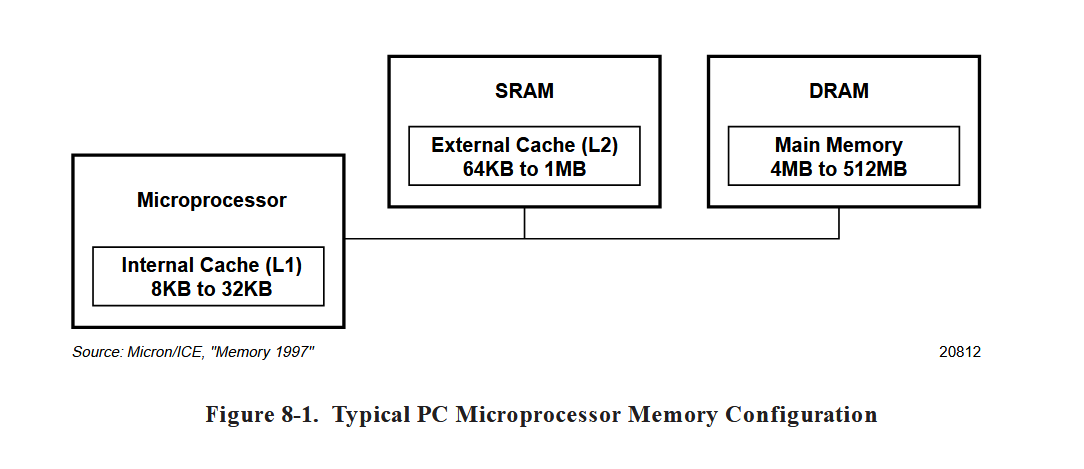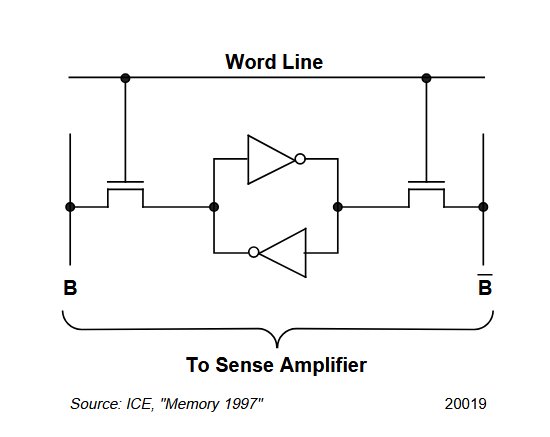SRAMs are static memory. They are implemented using 6 transistors usually and because of that more expensive.
Fills 2 needs:
- direct interface with CPU at speeds not attainable by DRAMs
- replace DRAMs in systems with very low power consumption
In 1st use, SRAM serves as cache memory, interfacing between DRAMs and the CPU

For 2nd use, SRAM is used instead of DRAM. This is because DRAM refresh current is several orders of magnitude more than the low-power SRAM standby current.
Access time is comparable to DRAMs in low power mode.
How it Works#

Consists of bi-stable flip flops connected to the internal circuity by two access transistors.
It has 3 states:
- Idle State
- When not addressed, the access transistors are off and flip flops maintain their state, preserving the stored data.
- Read Operation
- Activating the world line turns on the access transistors, connecting the flip flops to bit lines. Sense amplifiers detect the logic level and transfer it to the output.
- Write operation
- Data from the input is driven onto the bit lines, overriding the existing state due to stronger write drivers.
Compared to DRAM, SRAM only needs power supply for stable data.
Types#
- 4T Cell
- Four NMOS transistors with two poly load resistors
- 6T Cell
- Four NMOS and two PMOS transistors, (better stability and performance)
- TFT Cell
- Utilizes thin-film transistors (often used in applications like display technologies)
Applications:#
- Cache memory: L1 and L2 caches in CPUs
- Storage buffers: Temporary storage in storage devices
- Industrial and Peripheral buffers: Networking equipment and other peripherals
References:
https://web.eecs.umich.edu/~prabal/teaching/eecs373-f11/readings/sram-technology.pdf
